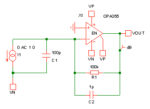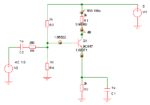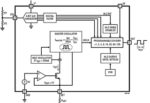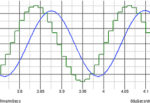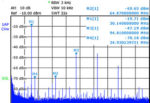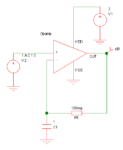The use of opamps as a transimpedance amplifier is well known and a good analysis of the noise behavior of them is in the old Burr Brown Application Bulletin AB-076 from 1994. This is still available from Texas Instruments’ web site as sboa060 – simply search for that on their website. Improving the signal to […]
Industry Experts
What is a cascode amplifier?
I am not sure how “fashionable” discrete transistor design is nowadays, but anyone using discrete transistors, bipolar or otherwise, for high speed designs other than for switching probably knows about cascode designs. The purpose of a cascode amplifier (not to be confused with cascade which is a chain of two or more amplifiers) is to […]
LTC6990/1/2/3/4/5 TimerBlox
By Chris Francis I have used various programmable clock generator chips, such as the PLL based devices from IDT for generating high frequency clocks in mixed signal systems, such as pixel clocks for analog to digital converters in video systems. In those applications precision frequencies can be important and speed can be more than 100MHz. […]
5 ways to generate a sine wave
It is not uncommon to need a sine wave but how do you generate it? The “best” or most appropriate method for a particular application depends on several things such as: frequency, purity required, amplitude, possible synchronization with another frequency, variable frequency and/or amplitude. At lower frequencies a Wien bridge might be considered – for […]
AD9850 Direct Digital Synthesis Chip: How is it used?
By Chris Francis There are a number of DDS chips around. Taking Analog Devices as an example, they range from simple, low speed, low cost devices such as the AD9837 (5MHz or 16MHz clock) for around $2 to the AD9914 3.5Gs/s costing over $180. Some are aimed at function generators, some for test and measurement, […]
Open loop gain: how to measure with SPICE
When designing opamps in analog IC design, it is frequently required to plot the open loop gain/phase. One way of doing that is to use a high feedback resistor and very high capacitance so the feedback network has an extremely low corner frequency: This works fine unless your opamp drive capability is low, in which […]

